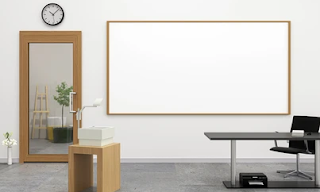LESSON PLAN OF TWO DIMENSIONAL FIGURES
LESSON PLANNING OF TWO DIMENSIONAL FIGURES
Subject Mathematics
Grade 2nd
Students` Learning Outcomes
- Students will be able to:
- Identify the figures like square, rectangle, triangle, circle, semi-circle and quarter circle.
- Identify vertices and sides of a triangle, rectangle and square.
Information for Teachers
- Students already have a good idea of different basic shapes so start the lesson by using these ideas.
- The shapes having only length and width are called two dimensional (2D) shapes e.g. square, rectangle, triangle etc.
- The shapes having length, width and height as well are called three dimensional (3D) shapes e.g. book, box, geometry box, cupboard, door etc.
- Circle and oval shapes have no corners and four sides.
- Triangle has three corners and three sides.
- A vertex is the corner of any shape. Its plural is called vertices.
- It is necessary for teacher to understand comprehensively the mathematical terms e.g. e.gcorners or vertices, sides, circle, semi-circle, quarter circle.
- During this lesson teacher should concern the textbook where and when needed.
Material / Resources
Writing board, chalk / marker, duster, glass,
card sheet, scissors, 2D shapes model (triangle, rectangle and square), sign
board, electric board, charts, cover of lunch boxes, slate, bed sheets,
doppatta, plastic sheet, textbook
Introduction
- Ask following questions from the whole class:
What is the shape of the board of classroom?
- Identify the corners of this board. (4)
- How many sides does this board have? (4)
- Show them one note book, ask about its shape, corner and the number of sides it has.
- Repeat the same with different objects of different shapes.
- Give them few cutouts of square, rectangle and triangles and ask them to sort out similar shapes.
Development
Activity 1
- Show the students cut outs of different shapes like square, rectangle and triangle.
- Ask them to tell the names of these shapes.
- Help them in telling name of shapes.
- Ask them to give examples from their surroundings of the objects similar to these shapes.
- Draw a “shapes house” and ask them to identify shapes.
Activity 2
- Demonstrate to the students how they can make a circle, semi-circle, and quarter circle by using a card sheet or piece of paper.
- Take a card sheet or piece of paper and draw a circle with the help of a glass. Cut this circle with the help of scissors.
- Show and tell them that this is called circle.
- Ask one of the students to fold this circle into two halves. Now open the circle and cut it into two equal parts along the folding line.
- Show both half`s circle and tell them that each part is called a semi-circle.
- You may refer back to the concept of fractions at this point.
- Tell the students that each semi-circle is ½ or half of the original circle.
- Ask two of the students to take a semi-circle and fold it into two halves. Cut each semicircle into two equal parts along the folding line. Show cut part of a semicircle to students and tells them that each part is known as a quarter circles.
- You may remind them of fractions at this point.
- Remind them that in fraction term “a quarter” is written as ¼.
- Sum up the activity by explaining that a circle is equally divided in two parts.
- Each part is called semicircle and each of those two semicircles is further divided into two quarter circles and hence / there are four quarters in a circle.
Activity 3
- Divide the class in groups of four.
- Provide each group with different shapes cards e.g.
- Tell each group to highlight / colour the corners of each shape.
- Give them some time for discussion within groups.
- Ask any two groups to present their work for whole class and point out corners in each shape.
- Encourage other students to ask different questions from presenters to clear the concept further.
- Sum up the activity by explaining that a corner of any shape is called vertex, explain about the sides of shapes as well. Be sure about the use of Mathematical vocabulary.
Activity 4
- Show a plate of square shape to the student. (Carton)
- Ask students to tell sides and vertices of the plate.
- Put a mark or a line on the vertex which they have already counted to avoid from second time counting.
- Facilitate if they find difficulty in identification of vertices and sides.
- Repeat the same procedure by showing them different 2D objects e.g. sign board, electric board, charts, cover of lunch boxes, slate etc.
Activity 5
- Divide the class in four groups.
- Provide each group different 2D objects e.g. paper, plastic sheet, bed sheet, doppatta etc.
- Ask them to identify and explain the sides and vertices of these objects to each other within group.
- Sum up the activity by asking following questions:
- How many sides and vertices does a square and a rectangle has?
- How many sides and vertices does a triangle has?
Activity 6
- Provide them a work sheet with different shapes drawn on it, or draw these on the board for the students to copy on their notebooks.
Sum up / Conclusion
- Square and rectangle have four corners and four sides.
- Triangle has three corners and three sides.
- A vertex is the corner of any shape. Its plural is vertices.
- If we divide whole circle in two parts, the two semi-circles are formed and if a semi-circle is divided in two parts, two quarter circles are formed.
Assessment
- Draw different shapes on board and label them with the help of students.
- Ask following questions from students:
- What is the appropriate word for corner? (Mathematical vocabulary)
- How many sides and vertices does your class room wall have?
- Teacher is also required to involve the students in solving the problems given in the exercise at end of unit / chapter.
Follow up
- Ask students to draw different shapes e.g. square, rectangle, triangle, circle, semi-circle and quarter circle in their note nooks.
- Ask them to colour their vertices and write how many sides each shape have?
- Ask the students to solve the questions given in their textbook.
- Ask the students to draw things which are found in kitchen.



















Comments
Post a Comment